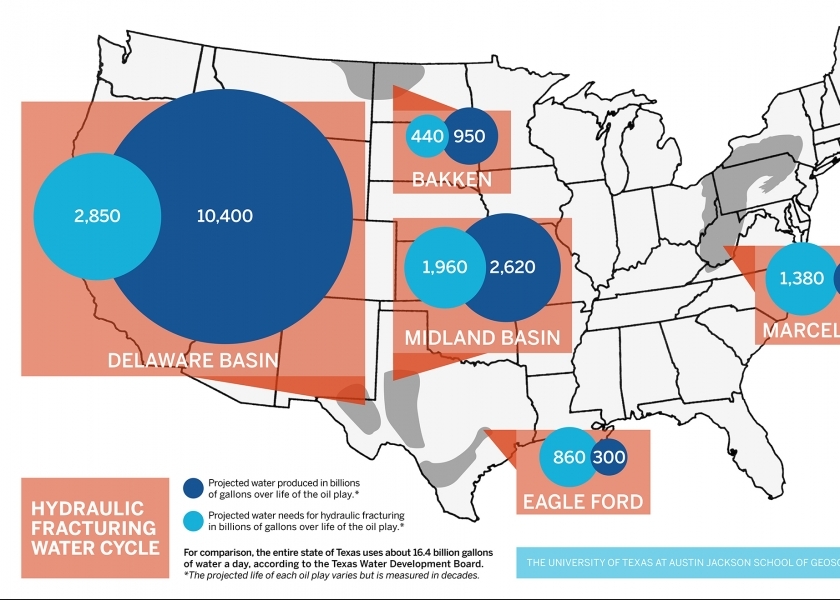Water Reuse Could be Key for Future of Hydraulic Fracturing
November 12, 2020
A lot of water is produced alongside oil and gas in unconventional reservoirs, a situation that raises a longstanding question: What to do with it all?
Two new studies, both published in February 2020, crunched the numbers around produced water and its potential uses to come up with an answer.
According to their work, enough water will be produced as a byproduct of oil production to theoretically counter the need to use fresh water for hydraulic fracturing in many of the nation’s largest unconventional shale plays. Furthermore, while other industries, such as agriculture, might want to recycle some of that water for their own needs, water quality issues and the potential costs involved mean it could be best to keep the water in the oil patch.
“We need to first maximize reuse of produced water for hydraulic fracturing,” said Bridget Scanlon, lead author on both of the studies and a senior research scientist with the Bureau of Economic Geology. “That’s really the message here.”
The first study, published in Environmental Science and Technology, quantifies for the first time how much water is produced by oil and natural gas operations compared with how much is needed for hydraulic fracturing. The authors also projected water demand for hydraulic fracturing needs and produced water during the life of the oil and gas plays, which span decades.
The second study assesses the potential for using the water produced by oil and natural gas in other sectors such as agriculture. It was published in Science of the Total Environment and shows that current volumes of produced water are relatively small compared with irrigation water demands and will not solve water scarcity issues.
The research looked at eight major plays across the U.S., including the Permian (Midland and Delaware), Bakken, Barnett, Eagle Ford, Fayetteville, Haynesville, Marcellus and Niobrara plays.
The scientists used historical data from 2009 to 2017 for all plays, and projections were developed for the life of the oil plays based on the technically recoverable oil using current technology. Oil plays produced much more water than natural gas plays, with the Permian Basin producing about 50 times as much water as the Marcellus in 2017. As far as recycling potential for hydraulic fracturing, the research shows that in many cases there’s plenty of water that could be put to good use. For instance, in the Delaware Basin, which is part of the larger Permian Basin in Texas, scientists found that projected produced water volumes will be almost four times as great as the amount of water required for hydraulic fracturing.
Managing this produced water will pose a significant challenge in the Delaware, which accounts for about 50% of the country’s projected oil production. Although the water could theoretically be used by other sectors, such as agriculture in arid West Texas, scientists said water quality issues and the cost to treat the briny water could be hurdles. In addition, if the water were highly treated to remove all the solids, large volumes of salt would be generated. The salt from the produced water in the Delaware Basin in 2017 alone could fill up to 3,000 Olympic swimming pools.
Back to the Newsletter
